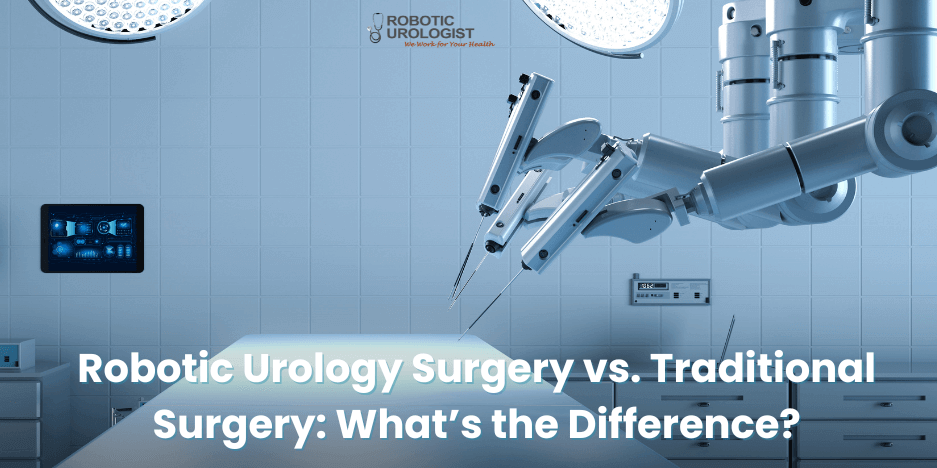Surgery is considered the first-line treatment for early-stage prostate cancer and kidney tumours that haven’t started spreading to distant areas in the body. For decades, traditional surgery has worked well for urological issues.
With technological advances, surgical procedures have evolved from traditional surgery to robotic surgery with a range of benefits.
However, the popularity of robotic surgery doesn’t eliminate the need for traditional urological surgery. In fact, according to Dr. Rajesh Taneja, the best robotic uro-oncologist in Delhi, both surgeries have their unique advantages and some limitations as well.
Now, the question arises – which surgery is better – robotic surgery or traditional open surgery?
Let’s dig deeper to know the differences between these two surgical approaches to understand which is better for us.
Traditional Urological Surgery: Advantages And Disadvantages
Traditional uro surgery or open surgery requires a large incision in the body to access and treat the affected area. For several decades, it has been the standard approach for complex urological treatment, which comes with some advantages and disadvantages –
Advantages of Traditional Surgery:
- Surgeons get direct visuals and tactile access to organs and tissues.
- It’s a tried and tested method for treating a wide range of health conditions.
- Due to the few usages of technological equipment, it is less expensive than advanced surgeries.
Disadvantages of Traditional Surgery:
- A larger incision causes pain, scarring and a longer recovery time.
- Blood loss and infections invite higher risk.
- When multiple procedures are involved, longer hospital stays may cause heavy hospital bills.
Robotic Surgery: Advantages And Disadvantages
Robotic surgery in urology also refers to robot-assisted laparoscopic surgery. In this minimally invasive surgery, the robotic urologist surgeon uses robotic arms and instruments to perform surgery through small incisions in the body.
Advantages of Robotic Surgery
- Precision and accuracy: Robotic surgery is highly precise and accurate, eliminating the risk of complications while offering improved outcomes.
- Minimally invasive: Smaller incisions lead to less pain, wounds and faster recovery of the patients.
- Better visualisation: With high-definition 3D cameras, an expert robotic urologist surgeon gets a better, magnified view of the surgical area, which leads them to perform surgeries more effectively.
- Improved range of motion: The robotic arms can be directed to move those places where human hands cannot, offering greater access to complicated areas.
- Faster recovery: With less scarring and reduced blood loss, patients often return to their normal lives within a few days of the surgery.
Disadvantages of Robotic Surgery
- Cost: With the use of modern and advanced surgical equipment, robotic surgery is expensive.
- Technical difficulties: Just like any technology, there is a potential risk of technical faults during surgery, such as robotic arm malfunctioning and power failure, which could lead to complications.
- Learning curve: Since robotic surgery is relatively new in the surgical field, there could be a limited number of highly skilled and experienced robotic surgeons.
The good news is we have the top robotic urologist surgeon in Delhi, Dr Rajesh Taneja, performing robotic-assisted urological surgeries with excellent results.
Comparison of Robotic Surgery vs Traditional Surgery
| Aspect | Traditional Urologic Surgery | Robotic Uro Surgery |
| Surgical Approach | Open incisions lead to significant tissue damage, longer recovery and higher risk of complications | Less invasive with small incisions resulting in less blood loss, scarring and faster recovery |
| Precision and Accuracy | Depending on the surgeon’s manual skills and instruments | Enhanced precision and accuracy due to robotic instrumental usage, allowing for operating even in hard-to-reach areas |
| Visualisation | Surgeon’s limited vision within the exposed surgical space | Magnified, detailed view for the robotic urologist surgeon with high-definition 3d cameras |
| Recovery time | Longer recovery leads to patients staying longer in hospitals and delayed return to normal activities | Faster recovery time with shorter stays in the hospitals and quickly resuming normal activities |
| Remote Surgical Access | Not possible as a surgeon must be physically present in the operating theatre | Enables the possibility for remote surgeries using robotic interfaces and telecommunication |
| Cost | More cost-effective, whereas the cost depends on the type of surgery | More expensive due to robotic equipment, surgeons’ and operating staff’s specialised training |
Choosing the Right Surgery for You

The decision between traditional open surgery and robotic surgery depends on several factors. Depending on the anatomical complexity and benefits of precision, robotic urologist surgery in Delhi takes place.
Sometimes, traditional surgery is also recommended in specific situations based on complexity, urgency or limited resources.
Here are the key factors to consider to make a wise decision –
- Health condition, cancer or tumour type and stage
- Patient’s preferences
- The surgeon’s expertise and experience in each method
- Affordability and insurance coverage
Final Thought
While robotic uro surgery uses cutting-edge technology and offers ample patient benefits, it may not be the only option for uro surgery. However, we must admit that with precision, minimal invasiveness and enhanced visualisation, robotic surgery has redefined surgical experiences.
Looking for a skilled robotic uro-oncologist in Delhi? Consult Dr. Rajesh Taneja, who can guide you towards the right surgical approach that best suits your specific needs.
FAQs:
How long does it take to heal from robotic urology surgery?
Compared to traditional open surgery, robotic uro surgery offers faster recovery, where patients can typically return to normal life within 2-6 weeks after the surgery.
Is robotic surgery more expensive than traditional surgery?
Due to the higher cost of robotic equipment and the need for specialised training for surgeons, robotic surgery is more expensive than traditional surgery.
Is robotic surgery safer than traditional surgery?
Both traditional and robotic surgeries involve inherent risks. The safety of each approach depends on numerous factors, including the expertise and experience of the traditional surgeon or robotic urologist surgeon, the surgical procedure, and the overall health of the patient.




